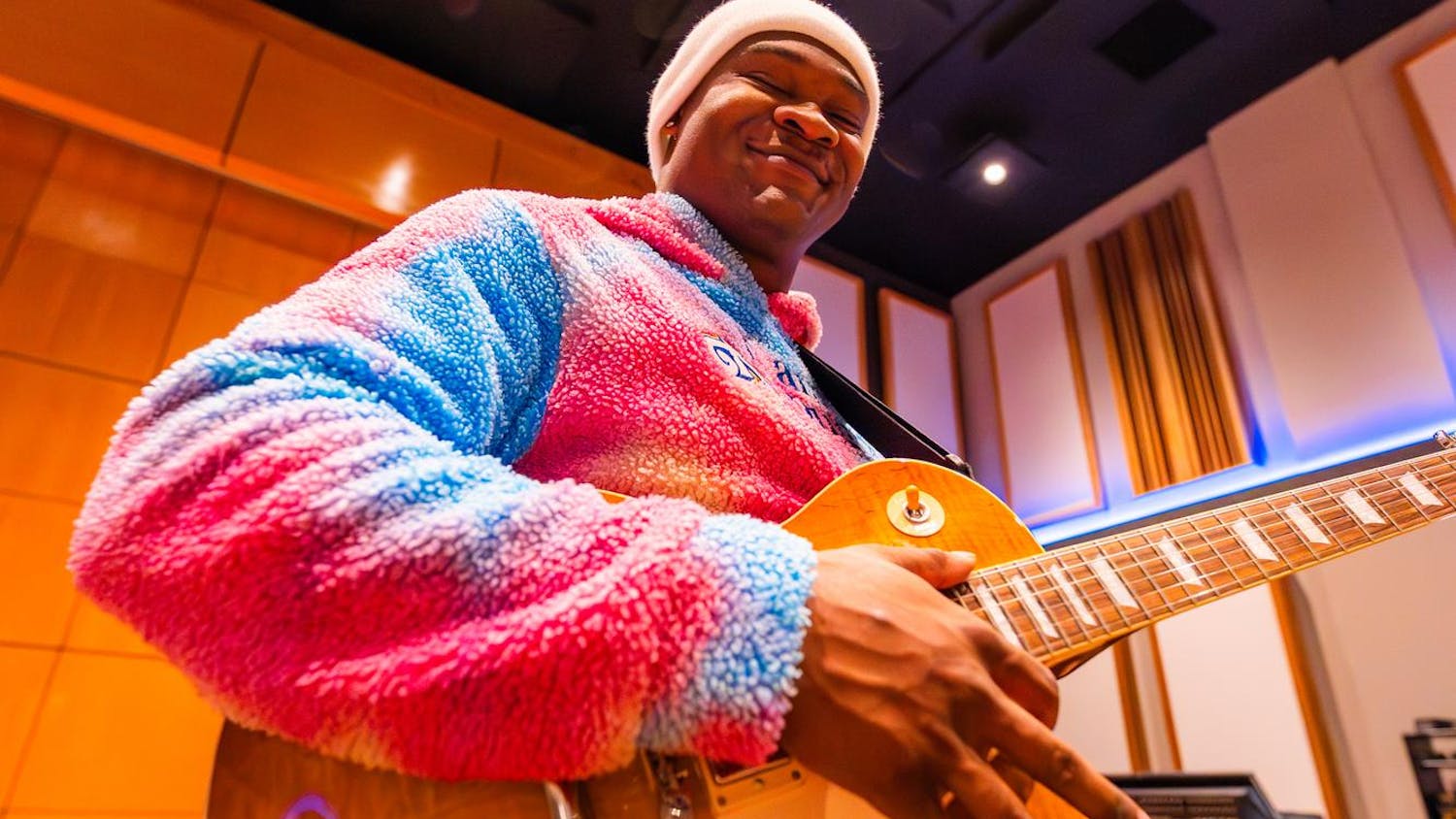The sixth annual War Eagle Native American Festival was an event for people of all ages and ethnicities.
The office of Diversity and Multicultural Affairs and the Auburn American Indian Association held the festival Friday at Ham Wilson Livestock Arena on South Donahue from 9 a.m. until 4 p.m.
The Native American festival is normally held at the Jule Collins Smith Museum of Fine Arts, but was at the arena because of the weather, said Shakeer Abdullah, director of the Multicultural Center.
"The festival is to honor and learn about the Native American history of Alabama and this region," Abdullah said. "Cities and rivers in Alabama are named after Native Americans, and we wanted to get back in touch with that history and reach out to the community and reach out to Auburn University."
The festival began with a presentation of colors during the opening ceremony and ended with the retiring of the colors.
Food such as fish baskets, nachos, lemonade and French fries were sold at the event, to go along with Native American vendors.
Traditional performers, reenactors, singers, musicians and storytellers put on shows and shared their history. Drumming, exhibition dancing and flute playing was also performed.
More than 1,000 people passed through the festival, coming to join the historical experience. Ten elementary and middle schools from the surrounding areas were in attendance.
"The festival is good depending on the age," said Todd McConnell of Auburn, who was there with his two children. "For 4-year-olds it might be a little much, but the other stuff they can see, understand and enjoy."
The traditional dancing and drumming took place on the inside of the arena where the performers and reenactors took center stage.
Walking into the arena, sounds of chanting and singing, drumming and the jingling of bells could be heard as the performers danced for the audience.
Dressed in bright colors, feathers and authentic costumes the dancers performed traditional folklore and war dances, demonstrated the "Omaha," which is a grass dance and the "duck and dive," where they duck under a bullet to show the enemy their bullets could not hit them.
"People learn a lot of things that aren't in the history books about the dancing and the culture," said Daniel Harris, an Auburn High School student and Native American reenactor and dance competitor. "It felt good dancing; it's a lot of attention and it's a good crowd."
Different kinds of birds were exhibited by The Southeastern Raptor Center, and craft demonstrations were shown at the living history camp site exhibitions.
Tents representing four different camp sites were set up with authentic tools and artifacts for people about which to view and learn.
"We hope and try to make sure everything is authentic and represents that era as well as the region," Abdullah said.
The Cherokee material culture display exhibited indigenous crafts, deer skins used for trade and weapons and items used for personal grooming from the 18th and 19th century by Mark Eaton, a Cherokee and Saponi Indian.
The Creek Indian hunting camp from 1790-1820 by Butch Fuller, a Creek Indian from Brierfield, discussed and demonstrated how once a year for five months, the Creek men stayed in the camps hunting deer, averaging 200 a season.
"It is important because it is heritage, the past, and it's interesting to learn about different cultures," McConnell said. "Learning what they did to survive, things we can buy at the store, everything they did with their hands."
Deborah Sanders, a Creek Indian from Wetumpka, represented the women who would wear deer skin and prepare the food gathered by the men.
Pete Dunaway, a Muskogee Creek, demonstrated the Muskogee Creek camp and the hunting tools used, such as muskets, river cane blow guns and bow and arrows.
Speaker James Bullock enlightened audiences about the Seminoles and the history of the three Seminole wars.
"We couldn't be happier about the turnout," Abdullah said. "The students were really engaged and one of the teachers said it fit in their learning standards."
For more information, visit the Auburn American Indian Association Web site at www.auburn.edu/student_info/american_indian_association/.
Do you like this story? The Plainsman doesn't accept money from tuition or student fees, and we don't charge a subscription fee. But you can donate to support The Plainsman.




